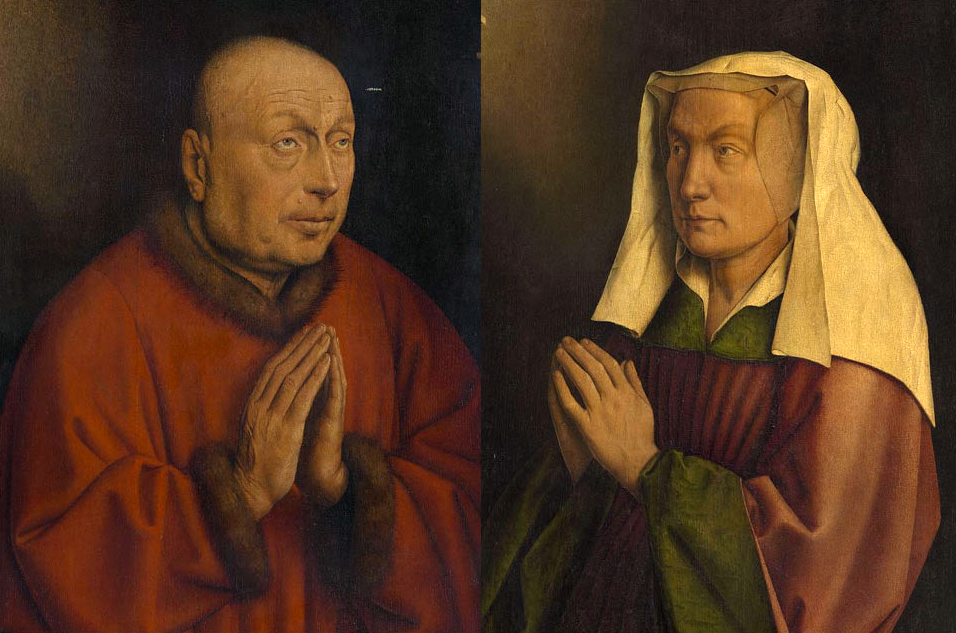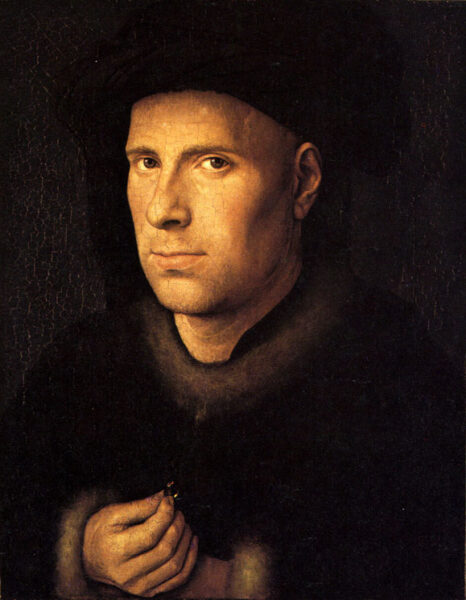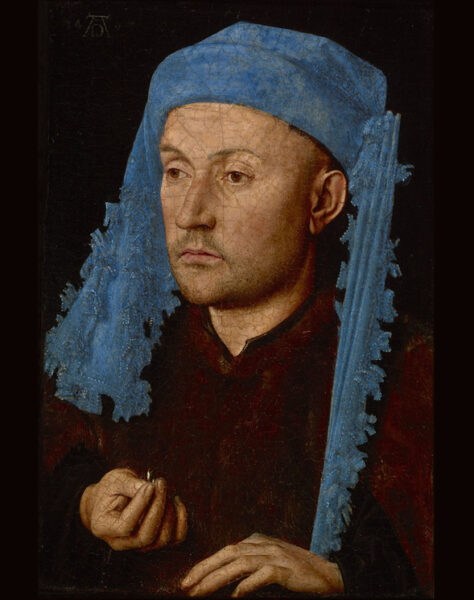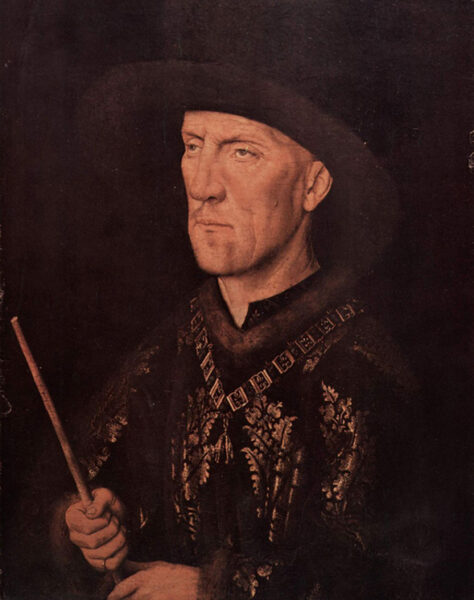Jan van Eyck is perhaps the most prominent of all the Flemish Masters. This year, we are invited to Ghent to explore his optical revolution.
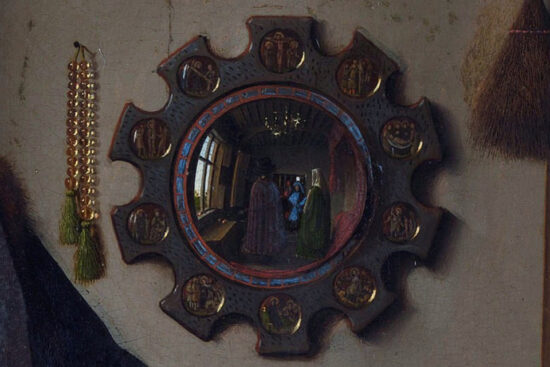
Jan van Eyck was born into a family of artists in 1380 – 1390. Not only his two brothers but also his sister were active in 15th century Flanders. Born in Maastricht, his youth is obscure. We first encounter him in the Hague in 1422, when he set up a small workshop. Soon he was employed as house-painter and valet de chambre to John of Bavaria, count of Holland and Hainaut. In Hague, he was active as a decorator of the Binnenhof palace. Later, he was attached to the court of Phillip the Good in Lille. Finally, in 1429 he moved to Bruges, where he lived to his death in 1441. He was highly regarded by his ducal benefactor and friend, and undertook numerous commissions of an unknown diplomatic nature. His oeuvre consisted of altarpieces, illuminated manuscripts, decorative programmes, and portraits.
In the 20th century, ca. 40 pieces of art were ascribed to him, but today only 23 pieces are acknowledged. Of these, thirteen are currently on view at the Museum of Fine Arts in Ghent.
At the centre of the exhibition are the eight restored panels of the “closed” Ghent Altarpiece. Uniquely displayed outside the St. Bavo’s Cathedral in Ghent, the Museum has recently completed the restoration of these panels. The exhibition has been mounted to show them in such a way that they may be admired close-up. This is probably a once-in-a-lifetime opportunity to enjoy these paintings in detail.
The exhibition opens with an anonymous painting of the Garden of Love at the court of the duke of Burgundy in the 15th century. Setting the scene for the world in which Jan van Eyck moved around effortlessly, we enter the world of optical illusions and renditions of the phenomena of light.
Van Eyck was long known as the “inventor” of oil painting. Not totally correct, he did invent the addition of drying agents, which foreshortened the period before painting over might be attempted. This technique created the opportunity for the minuscule details characteristic of the Flemish Masters. Coupled with a fine-tuned observation of the world, van Eyck was able to paint portraits and landscapes as never before seen. Persons, objects, and interiors all gained a three-dimensional and very tactile form through the illuminated details and the copious use of shading. The curators argue that the knowledge of light, as evidenced by his paintings, witness to a superior technical and scientific understanding of light and how it behaves.
This knowledge provided Jan van Eyck with the capacity to render textures and surfaces in hitherto unknown detail. Convex mirrors, round candelabra, copper candlesticks, apothecary jars, oriental carpets, washbasins, towels, and ceramic tiles are just some of the decorative pieces of art, which were given an extra life through their incorporation into the paintings of the era.
Particularly the portraits in the exhibition furnish examples of this artistic skill. If you have the opportunity, visit the exhibition before the beginning of March when the portrait of his wife Margareta, returns to Brugge. But even afterwards, the collected portraits of Baudoin de Lannoy, the Portrait of a Man with the Blue Chaperon and the Portrait of Jan de Leeuw witness to the unique opportunity, the exhibition offer. Unfortunately, the exhibition has not been able to secure a loan of the wedding portrait of Arnolfini, nor the self-portrait by Jan van Eyck from the National Gallery in London.
Finally, a highlight is the Turin-Milan Book of Hours, ca. 1420 – 1440, with its delicate rendition of landscapes at the bottom of the illuminated pages. Preserved only partly, visitors will be able to enjoy the scene in which John is depicted baptising Jesus in the river of Jordan.
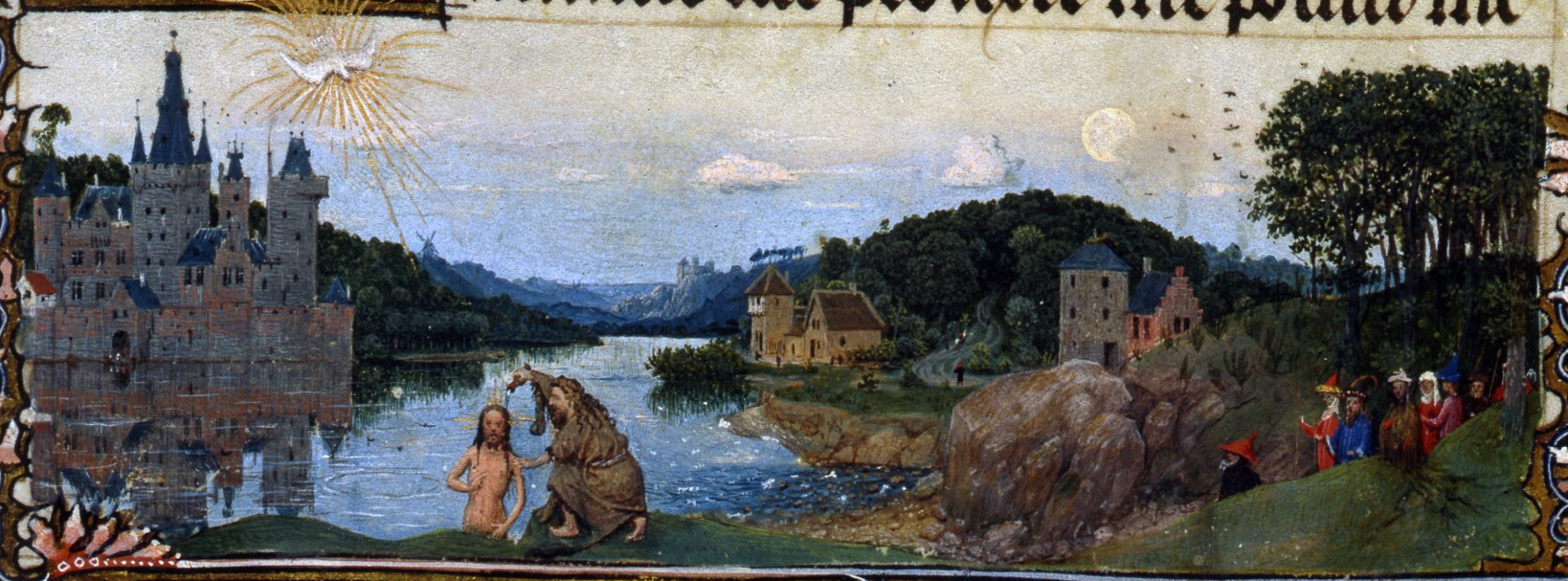
FEATURED PHOTO:
The restoration of the “closed” panels of the Ghent Altarpiece have documented that Jan van Eyck and his brother painted details “as if” the light from the window would shine one the panel. Notice the optical illusion in the hanging pot next to washbasin. Photo: Closer to Van Eyck
VISIT:
Van Eyck – An Optical Revolution
Museum of Fine Arts Ghent
Fernand Scribedreef 1
9000 Ghent
+32 (0)9/323.67.00
museum.msk@gent.be
01.02.20-30.04.20
Visit Ghent
In 2020, Ghent is honouring its greatest Flemish Master
